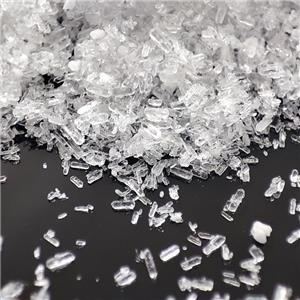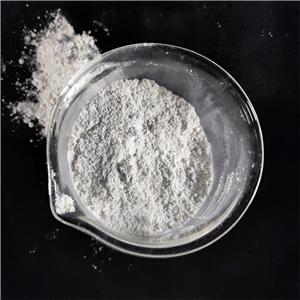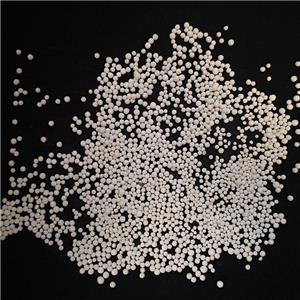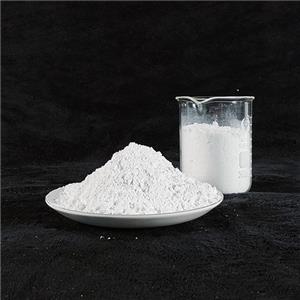What is the use of magnesium hydroxide in rubber?
Magnesium Hydroxide (Mg(OH)₂) in the Rubber Industry: A Versatile Compound with Multiple Benefits
Magnesium hydroxide (Mg(OH)₂) is a highly effective inorganic compound that has gained significant traction in various industrial sectors. One of its key applications is within the rubber industry, where it plays an important role as a flame retardant, reinforcing agent, and processing aid. This article delves deeper into how magnesium hydroxide is utilized in rubber production, highlighting the specific benefits and functions it offers to manufacturers and end-users.
1. Flame Retardant Properties of Magnesium Hydroxide in Rubber
In many industries, especially in automotive, construction, and electronics, rubber components are exposed to fire hazards, and as a result, there is a pressing need for materials that meet stringent fire safety standards. Magnesium hydroxide is widely used in rubber as a non-halogenated flame retardant due to its excellent thermal stability and fire resistance.
Mechanism of Action:
Magnesium hydroxide acts as an effective flame retardant because, when subjected to high heat or flames, it decomposes to release water vapor. This endothermic reaction not only absorbs a significant amount of heat but also cools the surrounding material, slowing down the spread of fire. The release of water vapor also dilutes the concentration of oxygen, which is essential for combustion, thus providing an added layer of protection against fire.
Additionally, when magnesium hydroxide decomposes, it forms magnesium oxide (MgO), a stable and heat-resistant material. This layer of magnesium oxide serves as a physical barrier that prevents further heat from penetrating and protects the underlying rubber from further damage. The ability of magnesium hydroxide to form this protective barrier makes it an ideal alternative to halogenated flame retardant, which can release toxic gases such as hydrogen chloride during combustion. As such, magnesium hydroxide contributes to both fire safety and environmental protection.
Advantages Over Halogenated Flame Retardants:
The use of magnesium hydroxide as a flame retardant is particularly attractive because it does not involve the use of toxic halogens like chlorine or bromine, which are commonly found in traditional flame retardant. These halogenated compounds, when exposed to high heat, can release harmful gases that pose health risks to humans and the environment. Magnesium hydroxide, on the other hand, is a safer and more eco-friendly option. This makes it an increasingly preferred choice for manufacturers who are looking for sustainable and non-toxic flame retardant alternatives.
Moreover, magnesium hydroxide is effective at lower loading levels, which allows it to be integrated into rubber products without compromising the material’s mechanical properties or performance. This combination of safety, efficiency, and minimal environmental impact makes magnesium hydroxide an essential component in fire-resistant rubber formulations.
2. Magnesium Hydroxide as a Reinforcing Agent
Beyond its role as a flame retardant, magnesium hydroxide also serves as an important reinforcing agent in rubber compounding. Reinforcement is a critical factor in enhancing the mechanical properties of rubber materials, such as their tensile strength, tear resistance, and elasticity. Magnesium hydroxide’s fine, crystalline structure plays a crucial role in improving the overall performance of rubber products.
Enhancing Mechanical Properties:
The small and uniform size of magnesium hydroxide particles helps distribute the material evenly throughout the rubber matrix, enhancing the rubber's mechanical properties. When used as a reinforcing agent, magnesium hydroxide can increase the tensile strength, elongation at break, and abrasion resistance of rubber products. This is particularly important in demanding applications such as tires, automotive seals, gaskets, and hoses, where performance under mechanical stress is crucial.
Reducing Dependency on Traditional Reinforcers:
One of the key benefits of magnesium hydroxide is that it can partially or fully replace traditional reinforcing agents like carbon black or silica. Carbon black, for example, is a commonly used filler in rubber compounding, but it is expensive and can sometimes lead to the degradation of the rubber's heat resistance and overall performance. Magnesium hydroxide, in contrast, offers a more cost-effective solution while still improving rubber’s strength and durability.
In addition, magnesium hydroxide’s natural inorganic properties make it less prone to degradation over time, ensuring that the reinforced rubber maintains its strength and elasticity over an extended service life. By reducing the need for other reinforcing agents, manufacturers can achieve a more balanced and efficient formulation, improving both performance and cost-effectiveness in the final product.
3. Processing Aid and Cost-Effectiveness
Magnesium hydroxide is also used as a processing aid in the rubber industry, particularly in the compounding phase. During rubber production, additives and fillers must be uniformly mixed into the rubber matrix to achieve the desired properties. Magnesium hydroxide facilitates this process by improving the dispersion of other ingredients, thus enhancing the overall consistency of the rubber mixture. This helps in producing high-quality, uniform rubber products.
In addition to its performance benefits, magnesium hydroxide is a cost-effective alternative to other more expensive additives and fillers. By incorporating magnesium hydroxide into rubber formulations, manufacturers can achieve the desired mechanical and thermal properties while maintaining a competitive cost structure. This is particularly valuable in large-scale production, where cost-efficiency plays a critical role in the competitiveness of the final product.
4. Environmental and Health Benefits
Magnesium hydroxide is non-toxic, non-carcinogenic, and environmentally friendly. As concerns about the environmental impact of industrial chemicals continue to grow, magnesium hydroxide provides an attractive alternative to more harmful additives. In particular, its use in flame retardancy reduces the need for halogen-based retardants, which are known to produce toxic by-products during combustion. Additionally, because magnesium hydroxide is naturally abundant and non-toxic, it is often seen as a more sustainable and safer option for both manufacturers and consumers.
5. Applications in Specialized Rubber Products
Magnesium hydroxide is particularly beneficial in producing rubber products that must withstand extreme conditions, such as high temperatures, abrasion, and exposure to chemicals. Examples of these specialized rubber products include:
Automotive Tires: Tires require materials that can endure both high temperatures from friction and the mechanical stresses from driving. The addition of magnesium hydroxide improves the tire's heat resistance and enhances its overall durability.
Seals and Gaskets: Rubber seals and gaskets are used in environments where they are exposed to varying temperatures and chemicals. Magnesium hydroxide enhances the rubber’s resistance to fire, heat, and chemical degradation, making it an ideal material for these components.
Electrical Cables and Wires: In electrical applications, rubber insulation needs to be both fire-resistant and durable. Magnesium hydroxideprovides an effective solution by improving fire safety while maintaining the flexibility and strength required for long-lasting performance.
Industrial Hoses: Hoses used in industrial settings are often exposed to high-pressure environments and extreme temperatures. Magnesium hydroxide helps reinforce the rubber’s structural integrity, ensuring that the hoses perform reliably under harsh conditions.




